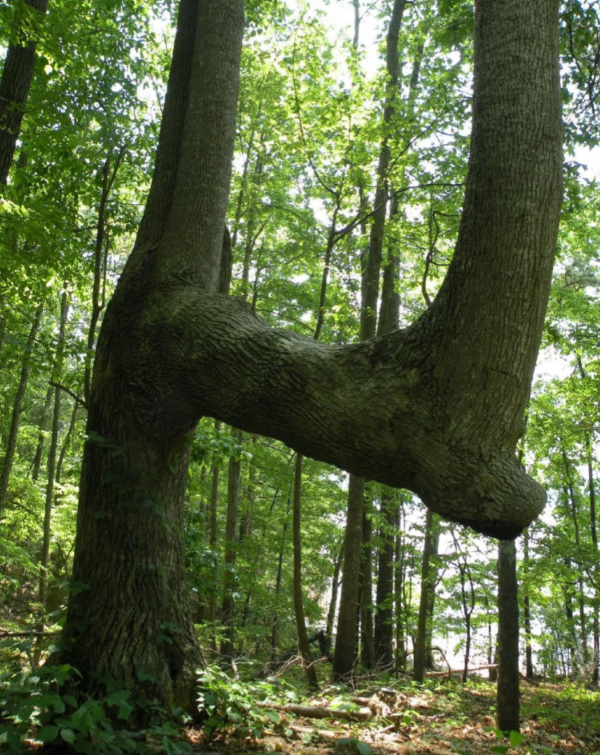If a tree appears bent in the forest, be on high alert and start scanning your surroundings without delay!
Navigating dense forests in the past required ingenious strategies, and the Native Americans mastered the art of trailblazing without maps or GPS. Picture this: they skillfully bent trees, planting a fragment in an opening, and allowing nature to weave a living trail marker. The distinctive appearance of these bent trees, featuring a notable nose or notch, set them apart, as captured in the captivating image below from www.ejlanham.com.

But how did the indigenous people distinguish between naturally bent trees and those shaped by human hands? Look for the subtle scars left by the straps’ original placement when the trees were young – a key detail to unravel the mysteries of their origin. Most of these arboreal wonders stand proudly, 150 years old or even more, as attested by the official American Forests website.

Across the United States, peculiarly shaped trees, with trunks bending at unexpected angles, stand as silent landmarks. These are not mere oddities; they are the remnants of a time when Native Americans crafted these living compasses. These “trail trees” once guided travelers through rugged terrain, pointing the way to food, water, and other crucial destinations. While contemporary life has overshadowed their practical purpose, these trees, with their unique tales etched in time, remain invaluable pieces of history. Reflect on the legacy these living landmarks carry, a testament to the ingenuity of those who once treaded these now-forgotten paths.



